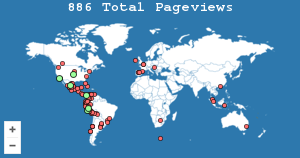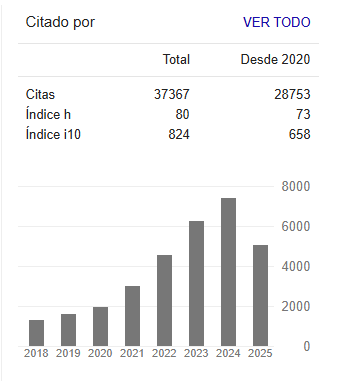Talent identification: line managers’ perceptions of their own requirements as talent spotters
Resumen
Identification is a key step in the organizational talent management process. Even though evaluating potential through an objective approach, integrating multiple methods, is recommended, many organizations rely upon line manager nominations as their main sources of identification. Given their central role, this study analyses the line managers’ attributes required to carry out an effective talent identification process. This qualitative study was drawn upon social cognition (social psychology framework) and talent identification literature with a sample of 20 managers, belonging to a multinational of Argentine origin, who described their experiences and requirements as talent spotters through semi-structured interviews. Results suggest that observation skills, listening and communication skills, cognitive skills, intuition, empathy, identification as part of the managerial role, low aversion to risk, vocation, predisposition to learn, resilience, and commitment are important attributes in the identification process. The present study provides a map of the talent spotter´s attributes that are necessary to assess employees´ potential.
Citas
Arnold, G., & Costanza, D. P. (2022). Designating high potentials. Organizational Dynamics, 51(2), 100826. https://doi.org/10.1016/j.orgdyn.2021.100826
Assael, H. (2004). Consumer Behavior: A Strategic Approach. Ed. Houghton Mifflin.
Bandura, A. (1986). Social foundations of thought and action: A social cognitive theory. Englewood Cliffs, NJ: Prentice-Hall.
Blanco, M. R. & Golik, M. (2021). Mind the gap: line managers as effective or non-effective talent spotters. International Journal of Training and Development, 25, 23–42. https://doi.org/10.1111/ijtd.12205
Berg, B., & Lune, H. (2017). Qualitative research methods for the social sciences (9 ed.). Harlow, UK: Pearson Education
Cappelli, P., & Keller, J. R. (2014). Talent management: Conceptual approaches and practical challenges. Annual Review of Organizational Psychology and Organizational Behavior, 1, 305–331. https://doi.org/10.1146/annurev-orgpsych-031413-091314
Chadee, D. (2011). Theories in Social Psychology. Wiley: Blackwell
Chamorro-Premuzic, T. & Kirschner, J. (2020). How the best managers identify and develop talent. Harvard Business Review. https://hbr.org/2020/01/how-the-best-managers-identify-and-develop-talent
Charmaz, K. (2014). Constructing grounded theory (2a. ed.). SAGE Publications.
Chin, J. L., & Trimble, J. E. (2015). Diversity and Leadership. SAGE Publications https://doi.org/10.4135/9781483368801
Collings, D., & Mellahi, K. (2009). Strategic talent-management: A review and research agenda. Human Resource Management Review, 19, 304-313. https://doi.org/10.1016/j.hrmr.2009.04.001
Denzin, N., & Lincoln, Y. (2000). The discipline and practice of qualitative research. In N. Denzin & Y. Lincoln (Eds.), Handbook of qualitative research (pp.1–28). Sage.
Dominick, P., & Gabriel, A. (2009). Two sides to the story: An interactionist perspective on identifying potential. Industrial and Organizational Psychology, 2, 430-433. https://doi.org/10.1111/j.1754-9434.2009.01168.x
Dries, N. (2013). The psychology of talent management: A review and research agenda. Human Resource Management Review, 23, 272-285.https://doi.org/10.1016/j.hrmr.2013.05.001
Dries, N., & Pepermans, R. (2012). How to identify leadership potential: development and testing of a consensus model. Human Resource Management, 51(3), 361-385. https://doi.org/10.1002/hrm.21473
Ellington, J., Brannick, M., & Levine, E. (2015) Job specification. In Wiley Encyclopedia of Management. DOI: 10.1002/9781118785317.weom050137
Epstein, S. (2010). Demystifying intuition: What it is, what it does, and how it does it. Psychological Inquiry, 21(4), 295-312. https://doi.org/10.1080/1047840X.2010.
Evans, A., Smale, A., Bjorkman, I., & Pucik, V. (2011). Leadership development in multinational firms. In Storey, J. (Ed.), Leadership in Organisations: Current Issues and Key Trends. Routledge.
Frankfort-Nachmias, C., & Nachmias, D. (1996). Research methods in the social sciences. St Martin’s Press.
Fiske, S., & Taylor, S. (2013). Social Cognition: From Brains to Culture. Sage.
Finkelstein, L., Constanza, D., & Goodwin, G. (2018). Do your high potentials have potential? The impact of individual differences and designation on leader success. Personnel Psychology, 71, 3-22. https://doi.org/10.1111/peps.12225
Gallardo-Gallardo, E., & Thunnissen, M. (2016). Standing on the shoulders of giants? A critical review of empirical talent management research. Employee Relations, 38(1), 31-56. https://doi.org/10.1108/ER-10-2015-0194
García-Carbonell, N., Martín-Alcázar, F., & Sánchez-Gardey, G. (2015). Determinants of top management’s capability to identify core employees. Business Research Quarterly, 18, 69-80. https://doi.org/10.1016/j.brq.2014.07.002
Golik, M., & Blanco, M.R. (2022). Homophily: functional bias to the talent identification process? Personnel Review, 51(2), 620-643. https://doi.org/10.1108/PR-05-2019-0230.
Golik, M., Blanco, M.R., & Czikk, R. (2018). On the trail of line managers as talent
spotters. Human Resource Development International, 21(3), 232-253. https://doi.org/10.1080/13678868.2017.1385195
González, F. & Ruiz, P. (2015). Cognición Social. In A. Vásquez Echeverría (Ed.) Manual de Introducción a la Psicología Cognitiva (pp. 249-271). UdelaR.
Heslin, P., Latham, G., & VandeWalle, D. (2005). The effect of implicit person theory on performance appraisals. Journal of Applied Psychology, 90(5), 842–856. https://doi.org/10.1037/0021-9010.90.5.842
Jolliffe, D., & Murray, J. (2012). Low Empathy and Offending. In R. Loeber and B. C. Welsh, The Future of Criminology. Oxford University Press.
Kabalina, V. & Osipova, A. (2022). Identifying and assessing talent potential for future needs of a company. Journal of Management Development, 41(3), 147-162. https://doi.org/10.1108/JMD-11-2021-0319
Kahneman, D. & Klein, G. (2009). Conditions for intuitive expertise: A failure to disagree.American Psychologist, 64(6),515-26.https://doi.org/10.1037/a0016755
Kahneman (2013). Thinking fast and slow. New York, Ed. Farrar, Straus and Giroux.
Kehoe, R., Collings, D., & Cascio, W. (2023). Simply the best? Star performers and high-potential employees: reflections and a path forward for research and practice. Personnel Psychology, 76 (2),585-615. https://doi.org/10.1111/peps.12558
King, N. (2004). Using templates in the thematic analysis of texts. In C. Cassell and G. Symon (Eds.), Essential guide to qualitative methods in organizational research (pp. 256–270). Sage Publications.
King, K. (2015). Global Talent Management: introducing a strategic framework and multiple-actors model. Journal of Global Mobility, 3 (3), 273-288. https://doi.org/10.1108/JGM-02-2015-0002
Klein, G. (2003). Intuition at Work: Why developing your gut instincts will make you better at what you do. Doubleday.
Lai, Y-L., & Ishizaka, A. (2020). The application of multi-criteria decision analysis methods into talent identification process: A social psychological perspective. Journal of Business Research, 109, 637-647. https://doi.org/10.1016/j.jbusres.2019.08.027
Lindlof, T., &. Taylor, B. (2011). Qualitative Communication Research Methods. SAGE
Lloyd, K. J., Boer, D., & Voelpel, S. C. (2017). From listening to leading: Toward an understanding of supervisor listening within the framework of leader-member exchange theory. International Journal of Business Communication, 54 (4), 431-451. https://doi.org/10.1177/2329488415572778
Mason, M. (2010). Sample size and saturation in PhD studies using qualitative interviews. Forum: Qualitative Social Research, 11(3). https://doi.org/10.17169/fqs-11.3.1428
Merriam, S. (2009), Qualitative Research. A Guide to Design and Implementation. Jossey-Bass, San Francisco.
Miles, A., & Sadler-Smith, E. (2014). With recruitment I always feel I need to listen to my gut: The role of intuition in employee selection. Personnel Review, 43(4), 606-627. https://doi.org/10.1108/PR-04-2013-0065
Patton, M. (2002). Qualitative research and evaluation methods (3rd ed.). Sage.
Rigolizzo, M. (2019). Ready and willing to learn: exploring personal antecedents to taking on learning challenges. Journal of Workplace Learning, 31(4), 289-304. https://doi.org/10.1108/JWL-08-2018-0101
Sánchez Bedoya, H.G. (2009). Una imagen enseña más que mil palabras. ¿ver o mirar? Zona Próxima, 10, 202-215.
Sanchez, J. & Levine, E. (2010). The rise and fall of job analysis and the future of work analysis. Annual Review of Psychology, 63, 397–425. https://doi.org/10.1146/annurev-psych-120710-100401
Silzer, R., & Church, A. (2009). The pearls and perils of identifying potential. Industrial and Organizational Psychology, 2(4), 377-412. https://doi.org/10.1111/j.1754-9434.2009.01163.x
Silzer, R., & Church, A. (2010). Identifying and assessing high potential talent: Current organizational practices. In R. Silzer & C., Dowell (Eds.). Strategy-Driven Talent Management: A Leadership Imperative, (pp. 213-279). Jossey-Bass.
Ulrich, D., & Allen, J. (2014). Talent accelerator: Understanding how talent delivers performance for Asian firms. South Asian Journal of Human Resources Management,1(1), 1-23. https://doi.org/10.1177/2322093714526666
Vásquez-Rodríguez, F. (1992). Más allá del ver está el mirar. Pistas para una semiótica de la mirada. Revista signo y pensamiento, 11(20), 31-40.
Villadangos, M., Errasti, J., Amigo, I., Jolliffe, D., & García-Cueto, E. (2016). Characteristics of empathy in young people measured by the Spanish validation of the basic empathy scale. Psicothema, 28(3), 323-329. https://doi.org/10.7334/psicothema2016.6
Wiblen, S., Dery, K., & Grant, D. (2012). Do you see what I see? The role of technology in talent identification. Asia Pacific Journal of Human Resources, 50(4), 421-438. https://ro.uow.edu.au/cgi/viewcontent.cgi?article=1946&context=buspapers
Yin, R. (2003). Case Study Research: Design and Methods. Sage.
Yilmaz, K. (2013). Comparison of quantitative and qualitative research traditions: Epistemological, theoretical, and methodological differences. European Journal of Education, 48(2), 311- 325. https://doi.org/10.1111/ejed.12014.
Yeong, M., Ismail, R., Ismail, N., & Hamzah, M. (2018). Interview Protocol Refinement: Fine-tuning qualitative research interview questions for multi-racial populations in Malaysia. The Qualitative Report, 23(11), 2700-2713. https://doi.org/10.46743/2160-3715/2018.3412.

Esta obra está bajo licencia internacional Creative Commons Reconocimiento-NoComercial-CompartirIgual 4.0.








.png)






























